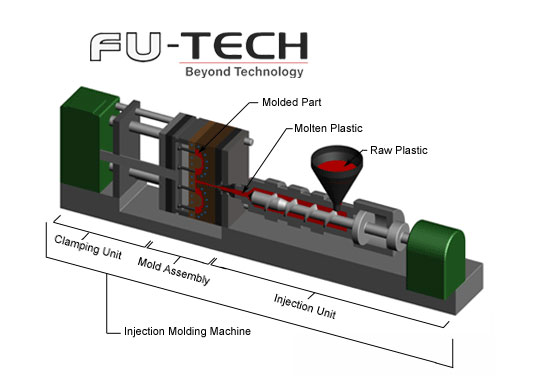Common Mistakes in Injection Molding and How to Avoid Them
Injection molding is a crucial process in the manufacturing industry, especially for companies like Futech Machinery Pvt. Ltd., aiming to produce high-quality plastic components. However, it’s not uncommon for even experienced professionals to make mistakes in this intricate procedure. In this blog post, we will explore some common mistakes in injection molding and provide valuable insights on how to avoid them.
1. Neglecting Material Selection
One of the most fundamental aspects of injection molding is material selection. It’s a step that can significantly impact the quality and performance of the final product. Neglecting or rushing through this crucial stage can lead to a cascade of issues throughout the entire manufacturing process.
The Importance of Material Selection
Selecting the right material for your injection molding project is akin to choosing the right tools for a job. It’s not a one-size-fits-all situation, and careful consideration is paramount. Here are some key reasons why neglecting material selection can be detrimental:
1. Product Durability
Different materials offer varying levels of durability. Neglecting to choose a material that aligns with the intended use of the product can result in premature wear and tear, leading to frequent replacements and increased costs.
2. Aesthetic Appeal
The appearance of the final product is often a critical factor, especially in consumer goods. The wrong material choice can lead to unsightly blemishes, color inconsistencies, or a lackluster finish that can affect marketability.
3. Mechanical Properties
Materials exhibit different mechanical properties, such as strength, flexibility, and heat resistance. Neglecting to match the material’s properties with the product’s requirements can lead to functional inadequacies or even product failure.
4. Cost Efficiency
Inefficient material selection can result in higher production costs. This might occur due to excessive material waste, increased energy consumption during processing, or the need for secondary operations to correct material-related issues.
Avoiding Material Selection Mistakes
To avoid the pitfalls associated with neglecting material selection, follow these essential steps:
a. Comprehensive Material Research
Take the time to thoroughly research and understand the properties of different materials available for injection molding. Consider factors such as strength, chemical resistance, and suitability for the intended application.
b. Consultation with Experts
Seek advice from material experts or suppliers who can provide valuable insights based on their experience. They can recommend materials that align with your project’s requirements.
c. Prototype and Testing
Before committing to a specific material, create prototypes and conduct testing to ensure it meets your expectations. Testing allows you to identify potential issues and make necessary adjustments.
d. Environmental Considerations
Consider the environmental impact of your material choice. Opting for sustainable and eco-friendly materials not only benefits the planet but can also enhance your company’s reputation.
e. Continuous Evaluation
Material selection is an ongoing process. As new materials become available or project requirements change, be open to reevaluating your choices to ensure the best results.
2. Poor Mold Design
The mold design is a critical factor in injection molding success. Inadequate mold design can result in defects, such as warping or sink marks. Invest in a well-designed mold to avoid these issues.
3. Inadequate Machine Maintenance
Regular maintenance of injection molding machines is often overlooked. Failing to keep your machines in top condition can lead to inconsistent product quality and increased downtime.
4. Ignoring Temperature Control
Maintaining precise temperature control during the molding process is crucial. Inaccurate temperature settings can result in defects like burn marks or voids in the final product.
5. Overlooking Injection Speed
Injection speed affects the filling and packing phases of molding. Incorrect injection speed can lead to issues such as incomplete filling or excessive stress on the mold.
6. Poor Gate Placement
The location of the gate, where the molten plastic enters the mold, is essential. Incorrect gate placement can cause flow issues, resulting in uneven filling and defects.
7. Inadequate Cooling Time
Proper cooling time is necessary to solidify the plastic and prevent deformation. Rushing the cooling process can lead to warped or distorted parts.
8. Lack of Quality Control
Not implementing a stringent quality control process can result in a higher rate of defective parts, leading to increased production costs.
9. Ignoring Environmental Impact
In today’s eco-conscious world, neglecting environmental considerations can harm your company’s reputation. Opt for sustainable materials and practices in your injection molding process.
10. Disregarding Safety Protocols
Ignoring safety guidelines can lead to accidents and injuries in the workplace. Ensure that your team follows all safety protocols to maintain a secure working environment.
